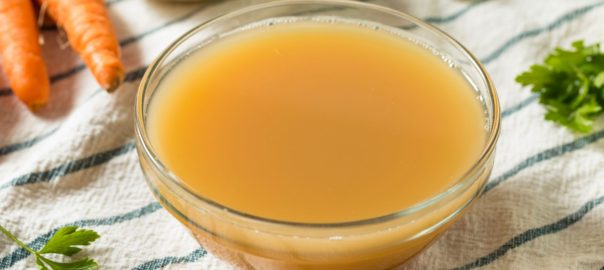Migraines is a debilitating neurological condition that can cause pain and other physical symptoms. They can affect both children and adults. There can be a genetic link to migraines, if this happens there may be a family history of them.
If you suspect your child is dealing with migraines it's important to understand how common they can be for children, especially a specific type called an abdominal migraine.
Fortunately, there are a number of holistic and natural ways to support children who are dealing with migraines.
How Common are Migraines in Children?
Migraines can be common in children and approximately 3-10% of children will struggle with them. As children get older, there is an increased potential to have this kind of headache. It is estimated that approximately 4% of preschool children, 8-12% of school-age children, and up to 23% of teenagers will experience migraines.
Interestingly, boys appear to get migraines slightly more often than girls before puberty. During the teenage years this changes and girls seem to be more affected than boys.
When children get migraines they are usually shorter than those experienced by adults, lasting anywhere from 30 minutes to 48 hours. Children may feel pain on both sides of their heads, whereas adults typically have pain only on one side. Other migraine symptoms that children can experience are the traditional ones and include light or sound sensitivity, nausea and/or vomiting, and sometimes visual auras.
What is Abdominal Migraine?
One special type of migraine, seen more often in children, is an abdominal migraine. About 4% of kids experience abdominal migraines. When an abdominal migraine occurs, children have severe stomach pain instead of head pain. This type of migraine mostly impacts children from 3 to 10 years of age and tends to be more common for girls.
The symptoms of an abdominal migraine may include severe stomach pain around the belly button. Children can also feel nauseous or they may lose their appetite. They may also vomit and have a pale appearance.
It is not easy to diagnose whether a child is experiencing abdominal migraine because the pediatrician needs to be able to rule out other potential causes of stomach pain. In order to diagnose abdominal migraine the criteria include whether or not the child has had at least five attacks of abdominal pain, each lasting 2-72 hours, with pain strong enough to interfere with normal activities. This should be accompanied by at least two of the other migraine symptoms: loss of appetite, nausea, vomiting, and looking pale.
Holistic Health Support for Children with Migraines
While medicines can be helpful in the treatment of migraine headaches, many holistic health strategies can can be a helpful adjunct. These options may help reduce the number and or severity of migraine attacks and potentially help improve overall well-being.
1.Eating Well
Eating a balanced,
nourishing diet and staying
hydrated are highly supportive for children dealing with migraine headaches. It’s important to avoid foods that trigger migraines, such as
migraine food triggers which can include chocolate, cheese, processed meats, and more.
2. Healthy Lifestyle Habits
Having good habits can help manage migraines. This includes having a regular sleep routine. Good sleep is crucial for children who deal with migraines. It is very important t have a regular sleep schedule, a comfortable sleep environment, and to get an adequate amount of sleep.
Parents should encourage consistent bedtimes and wake-up times, limit screen time before bed, and create a relaxing bedtime routine to improve sleep quality. Also be aware of environmental factors such as bright lights and loud noises, which can contribute to migraines. Reducing these as much as possible can potentially reduce their impact as triggers for migraines.
3. Stress Relief and Relaxation
Stress can be a big trigger for migraines. Teaching children how to manage their stress can be a helpful strategy for potentially reducing the frequency or severity of migraines. Techniques like
deep breathing exercises, muscle relaxation, and
mindfulness meditation can reduce stress and prevent migraines. Biofeedback, a practice that teaches control of heart rate and muscle tension, can also help to lower migraine incidence.
4. Cognitive Behavioral Therapy (CBT)
Cognitive Behavioral Therapy (CBT) is a form of talk therapy that has been shown to help children change negative thoughts and behaviors. CBT can teach coping strategies, improve pain response, and reduce the impact of migraines. Studies show that CBT, especially combined with relaxation techniques, can significantly reduce migraine frequency and severity.
5. Acupuncture
Acupuncture is an ancient Chinese practice that uses thin needles inserting into specific point in order to help with energy flow. Some studies indicate that acupuncture acupuncture can help reduce the number of days affected by a headache as well as potentially lowering the need for painkillers. Although there is a need for more research, parents and children have reported positive results from using acupuncture.
6. Yoga
A growing number of studies show that yoga can be beneficial for reducing the severity and frequency of migraines. Not just for adults, yoga can be beneficial for children also. By combining physical poses, or asanas, breathing exercises, also called pranayamas, and meditation, a yoga practice helps promote relaxation. Adding a regular yoga practice has been linked to fewer migraines and better stress management.
Conclusion
Migraines in children present a significant health issue. The best solution is to incorporate a variety of holistic health and wellness strategies. You may also need to consult a medical professional and, hopefully, encourage them to work together to support your child.
Understanding how common and, at the same time, how different pediatric migraines can be, especially when it comes to abdominal migraines, is key to a proper diagnosis and building a treatment plan. Combining medical and holistic strategies can help reduce the impact of migraines and may help improve a child's overall quality of life.
You'll also receive a free copy of the ebooks linked in the article, plus a variety of resources, and live monthly calls with Mira Dessy, The Ingredient Guru.
[expand title="Sources"]
- Hsu, Yu-Wei, et al. PLOS ONE, vol. 15, no. 2, 5 Feb. 2020, doi:10.1371/journal.pone.0228284.
- Author links open overlay panelFabiana Ursitti, et al. “Migraine in Childhood: Gender Differences.” European Journal of Paediatric Neurology, W.B. Saunders, 2023, www.sciencedirect.com/science/article/abs/pii/S1090379823000028. Accessed 07 June 2024.
- professional, Cleveland Clinic medical. “Migraines in Children.” Cleveland Clinic, my.clevelandclinic.org/health/diseases/9637-migraines-in-children-and-adolescents. Accessed 07 June 2024.
- professional, Cleveland Clinic medical. “Abdominal Migraine: What It Is, Causes, Symptoms & Treatment.” Cleveland Clinic, my.clevelandclinic.org/health/diseases/24449-abdominal-migraine. Accessed 07 June 2024.
- Bae, Ji-yong, et al. “Cognitive Behavioral Therapy for Migraine Headache: A Systematic Review and Meta-Analysis.” MDPI, Multidisciplinary Digital Publishing Institute, 28 Dec. 2021, www.mdpi.com/1648-9144/58/1/44. Accessed 08 June 2024
- Li, Yu-Xi, et al. Pain Research and Management, vol. 2020, 23 Mar. 2020, pp. 1–14, doi:10.1155/2020/3825617.
- Wu, Q., Liu, P., Liao, C., & Tan, L. (2022). Effectiveness of yoga therapy for migraine: A meta-analysis of randomized controlled studies. Journal of Clinical Neuroscience, 99, 147-151. https://doi.org/10.1016/j.jocn.2022.01.018
[/expand]













